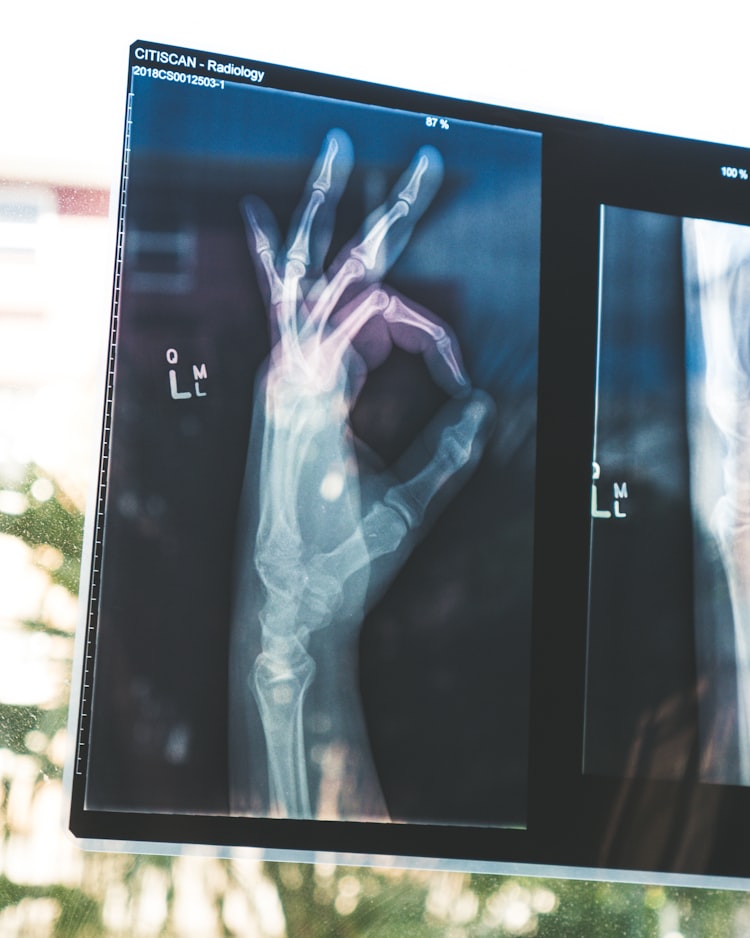Understanding Vata, Pitta and Kapha

The Elements
Ayurveda recognizes the following elements (in order from subtle to gross): Ether, Air, Fire, Water, Earth. These are referred to as the five great elements or panca maha bhutas. These elements are present within every living organism! As the elements join together the complexity of the creation increases. Everything in our universe is a result of the five elements. It is important to first understand the elements before understanding the doshas. An introduction to each element can be found below:
Ether

Ether is space. Without it, nothing would exist. Ether is the first expression of consciousness. Ether is movement without resistance or direction, freedom, vibration. Eventually, there was directional movement, which gave way to Air.
Qualities of the ether element: clear, light, subtle
This shows in the mind as open-mindedness and expansive thought
This shows in the body as all of the spaces in the body ie body cavities
Tanmatra: Sound
Tanmatra = the objects of perception, the subtlest energy of the five elements, through which the gross elements are evolved.
Air

Air is responsible for directional movement. The air element governs all sensory and motor movements. Air is movement with purpose or direction. Eventually, there was friction, which gave way to Fire.
Qualities of the air element: dry, moving, light, clear, rough, cold
This shows in the mind as consciousness and movement or thought
This shows in the body as the movement within the body ie digestive system, breathing, etc
Tanmatra: Touch
Fire

Fire is responsible for heat. Fire is luminous, penetrating, and heating. The intense flame of fire eventually gave way to liquid or water.
Qualities of the fire element: hot, sharp, light, dry, subtle
This shows in the mind as focus and concentration, the fire of understanding
This shows in the body as digestion, body temperature, metabolism
Tanmatra: Form
Water

Water is responsible for everything liquid. Water is cohesive and cleansing. Eventually, there was freezing, which gave way to Earth.
Qualities of the water element: liquid, cool, soft, dull, slimy
This shows in the mind as emotions
This shows in the body as all bodily fluids
Tanmatra: Taste
Earth

Earth is responsible for structure. The earth element is hard structures. Earth is the gravitational pull.
Qualities of the earth element: heavy, solid, dense, stable, hard, dull, gross
This shows in the mind as crystallization of emotions
This shows in the body as all of the solid tissues ie bones, tendons, etc
Tanmatra: Smell
The Qualities and There Opposites
The 10 pairs (20 total qualities) are used as a diagnostic tool, therapeutic guide and a clinical barometer. The qualities are present within everything - the elements, doshas, food, natural world. The qualities can either be aggravating or pacifying to specific doshas. Viewing the natural qualities of VPK dosha and treating the dosha with the opposite quality can bring healing. It is important to note, when trying to balance your individual constitution one should consider additional factors like lifestyle. When considering an individual, Ayurveda looks at that entire person - their born constitution (or prakrti), any imbalances (vikrti), time of day, time of life, season, physical location and more. So, one might assume that all kapha people need the light quality in there life to bring balance. But if that kapha person lives in a tropical place, eats raw food, has a very active lifestyle and job they may actually need more of the heavy quality to bring balance. Paying attention to all of the factors when considering the qualities and the opposites is of the utmost importance. I plan to create a dedicated post all about the gunas but I will leave it here for now.
Doshas
Let's now get into the topic at hand - the doshas! The elements join together to form 3 doshas.
- Ether + air = vata
- Fire + water = pitta
- Water + earth = kapha

All of the doshas are present within an individual although the ratio or dominant dosha will vary greatly from person to person. This unique constitution of an individual is referred to as prakrti. Each dosha has a specific expression in every dimension of a human being: body, mind and subtle energy. The doshas are the functional energy of the body. The doshas are also present within the natural universe.
Vata - Ether & Air
Associated with movement

Basic Overview of Vata
Seat: Colon
Additional Sites: Hips and thighs, low back, sacrum, lower abdomen, pelvic region, skeletal system, throat, head, ears, skin, hair and heart
Qualities: Dry, light, cold, rough, subtle, mobile, clear
Functions: Movement, breathing, natural urges, motor functions, sensory functions
In Balance: Creativity & flexibility
Out of Balance: Fear, anxiety, abnormal movements, worried, unable to relax/rest/sleep, rough, flaking skin, stiff and painful joints, heart palpitations, constipation, dryness
To Balance: Needs routine, warm cooked foods, sufficient rest, regulation of mental and physical urges. Think - support, comfort, safety.
Subtle Energy: Prana
As defined by Dr. Vasant Lad “The vital life force without which life cannot exist and which is primarily taken in through the breath; the flow of cellular intelligence that governs cellular communication, sensory perception, motor responses, and all subtle electrical impulses of the
Guna: Rajas
As defined by Dr. Vasant Lad “ One of the three universal gunas or qualities of consciousness; the principal of kinetic energy; active, mobile, and responsible for all movements”
Physical Characteristics
Additional characteristics: active/hyper mind, poor long term memory, irregular appetite, fast moving, restless sleep
Qualities of the Mind in a Vata Person:
Together, sattva, rajas and tamas form the three universal qualities of the mind.
Sattva is clarity, harmony, intelligence, happiness
Rajas is active, mobile, desire
Tamas is inertia, heaviness, slowness, darkness

In the vata individual the following characteristics will be present when the mind is in a sattvic, rajasic and tamasic state.
Sub-Doshas of Vata
Vata - Vayus or winds, that which moves.
The sub-doshas can be represented in emotional and mental faculties as well as specific organ functions.
General Wellness Tips for Vata Individual
- Routine: waking and going to bed at the same time, eating meals around the same time, regular weekly practices, predictability
- Sufficient rest: sleep ideally 8 hours per night. In bed before 10am and waking around 6am or even 7am in the winter.
- Warm cooked foods: soups, root vegetables, limiting or even avoiding uncooked, raw foods
- Supportive environments and friendships
- Regulation of impulses both mental and physical: reducing screen time before bed and early in the morning, responding skillfully rather than reacting, moving the body intentionally rather than constant tapping of the toes
- Moderate exercise: swimming, hatha yoga
- Daily meditation: meditation focused on grounding rather than the third eye or crown chakra will bring a calming and settled effect

Nutrition for Vata Individual
Sattvic Foods For the Vata Individual:
- Sweet, sour, and salty tastes pacify vata imbalance
- Spiced milk
- Pumpkin
- Yogurt
- Wheat
- Rice
- Cooked oats
- Sweet, ripe fruits eaten alone, fruit should not be mixed with other foods
- Eggs
- Various meats (think of heavy, slow animals like a cow)
- Mung beans
- Cooked vegetables
- Nuts in moderation
- All oils are good
- Freshly cooked foods, rather than leftovers or reheating foods
Exercise Recommendations for Vata Individual
Exercise Guidelines:
- Moderation
- Hatha yoga
- Swimming
- Mindful movements
- Walking
- Avoid overexertion, competition and frantic movements
Treatment for the Vata Individual

Treat vata with the opposite qualities. Example: oily, heavy, hot.
General treatment guidelines include:
- Oil massage
- Heat applications - heat pads
- Routine
- Heavy, grounding foods
- Weighted blankets at night
Vata Imbalances
General causes of vata aggravation include: dosha aggravation through over exercising, exposure to cold, eating raw foods, eating in improper ways (while moving, in stressful environments).
There are many ways in which the vata dosha can be aggravated. There can be an increase, decreased or disturbed quality. The breakdown of these is listed below.
Vata dosha vrddhi (increased quantity)
When qualities of vata are increased they will create an aggravation in the seats of vata and/or go beyond the vata sites.
Example: eating dry or light foods in excess, skipping meals, excessive movement, cold weather, excess of raw veggies, irregular routine, prolonged fasting, too much internal cleansing. Excess of vata qualities.
Symptoms include: dryness in skin, joints, hair, body, fatigue, pain, light-headedness, ringing in ears, inability to get warm, gas and bloating, anxiety, feeling spacey, difficulty swallowing, cracking joints, tremors, to name a few.
Vata & Ama (Sama Vata)
When the toxin mixes with the dosha
General themes: Irregular, pain, depletion/lowness
- Tongue coating that is brownish black
- Joint pain
- Generalized aching
- Mental confusion
- Constipation
- Low agni
Vata as it Relates to the Natural World
The doshas are not limited to the individual and can be seen within the natural world.
Time: 2 - 6 AM & PM
This is why it is generally ideal to wake up before 6am. The excitability of the vata energy allows an individual to wake up with alertness.
Stage of Life: 50+ years
This stage of life people can suffer from vata type diseases - arthritis, bone thinning, etc.
Seasonally: Fall
This can be seen as the season grows cooler. Cold winds are common and this brings in dryness. Skin can become dry, rough and chapped. Hair can become frizzy. Trees lose their leaves and draw the energy inward.

Pitta - fire & water
Expresses self as metabolic system

Basic Overview of Pitta
Seat: Small intestine
Additional Sites: Stomach, liver, gallbladder, spleen, heart, blood, eyes, skin, sweat, subcutaneous fat, gray matter of brain
Qualities: Hot, sharp, light, liquid, mobile, oily
Functions: Body heat, temperature, digestion, assimilation, intelligence, perception
In Balance: Understanding & intelligence
Out of Balance: Anger, hate, jealousy, inflammatory disorders
To Balance: Letting go/surrender
Subtle Energy: Tejas
As defined by Dr. Vasant Lad “The subtle essence of fire (agni) and pitta dosha, tejas governs digestion on both subtle and gross levels; the energy of intelligence, discrimination, and of all bodily fire; gives luminosity, brightness, brilliance, enthusiasm, passion; solar energy”
Guna: Sattva
As defined by Dr. Vasant Lad “One of the three universal gunas or qualities of consciousness; the principle of equilibrium, intelligence, essence, consciousness, and clarity of perception; potential energy, the energy of wisdom, understanding and cognition; it gives rise to the mind and senses in the Sankhya Philosophy”

Qualities of the Mind in a Pitta Person
Together, sattva, rajas and tamas form the three universal qualities of the mind.
Sattva is clarity, harmony, intelligence, happiness
Rajas is active, mobile, desire
Tamas is inertia, heaviness, darkness
In the pitta individual the following characteristics will be present when the mind is in a sattvic, rajasic and tamasic state.
Physical Characteristics
Additional characteristics: quick to learn/ understand, leaders, intense, determined and precise, sharp in speech
Subdoshas of Pitta
Pitta - Agni or forms of fire, providing heat.
The sub-doshas can be represented in emotional and mental faculties as well as specific organ functions.
General Wellness Tips for Pitta Individual:
- Staying calm/ avoiding stressful situations
- Cool foods
- Cool environments
- Daily meditation
- Supportive relationships

Sattvic Foods for the Pitta Individual
- Sweet, bitter, astringent tastes pacify the pitta dosha
- Whole grains: wheat, basmati rice, cooked oats
- Milk
- Sweet fruits such as berries
- Green leafy vegetables
- Egg whites
- Chicken or turkey
- Legumes, except for lentils
- Coconut oil, olive oil, sunflower oil and soy oil
Exercise Guidelines
- Activities that cool the body and mind
- Moderate exercise
- Bicycling
- Brisk walks
- Swimming
Treatment for the Pitta Individual
- Consuming cooling foods and beverages
- Time away from work and enjoyment with friends
- Avoid excess oil
- Slowing down
- Adequate sleep
Pitta Imbalances
Pitta dosha vrddhi (increased quantity)
When qualities of pitta are increased they will create an aggravation in the seats of pitta and/or go beyond the pitta sites.
Example: eating excess hot and spicy foods, alcohol, overexposure to sun, too much sour taste, excessive sweat, deep fried foods or foods oily in nature
Examples include: excess heat in the body - hot flashes, heartburn, burning sensation, and overly critical, headaches, lightheadedness, inflammation, loose stools, skin problems, to name a few.
Pitta & Ama (Sama Pitta)
When the toxin mixes with the dosha
General themes: Smelly, indigestion, spreading
- Foul smell of body or breath
- Indigestion
- Low appetite
- Diarrhea, nausea or vomiting
- Skin problems
- Heartburn

Pitta as it Relates to the Natural World
The doshas are not limited to the individual and can be seen within the natural world.
Time: 10 - 2 AM & PM
This is a great time to focus the mind either with work or a personal project. This is when the sun is highest in the sky and digestion is most powerful. A large lunch around noon is ideal for most.
Stage of Life: 16- 50 years
This is the time of life of learning, drive, motivation, vitality.
Seasonally: Summer
This can be seen as the season gets hot and humid. The sun is out for many hours a day. Flowers and blooming, fruits and veggies are growing and available for harvest.
Kapha - water & earth
Responsible for structure, lubrication

Basic Overview of Kapha
Seat: Stomach
Additional Sites: Lungs, pancreas, synovial fluid in joints, lymph nodes, breast tissue, plasma, sinuses, nose, tongue, cerebral spinal fluid, white matter of brain
Qualities: Heavy, slow, cold, oily, liquid, smooth, dense, soft, static, cloudy, hard, gross
Functions: Stability, energy, lubrication, unctuousness, holding
In Balance: Calmness, love, forgiveness
Out of Balance: Attachment, greed, possessiveness, congestive disorders
To Balance: Movement
Subtle Energy: Ojas
As defined by Dr. Vasant Lad “The subtle, positive energy of kapha dosha, it maintains immunity, strength, integrity, and vitality”
Guna: Tamas
As defined by Dr. Vasant Lad “One of the three universal gunas or qualities of consciousness. Tama gives rise to the five elements and the tanmatra in Sankhya Philosophy. It is the principle of inertia and is responsible for sleep, heaviness, slowness, unconsciousness, and decay. When it predominates in the mind, it brings ignorance, laziness, violence, and inertia”
Qualities of the Mind in a Kapha Person
Together, sattva, rajas and tamas form the three universal qualities of the mind.
Sattva is clarity, harmony, intelligence, happiness
Rajas is active, mobile, desire
Tamas is inertia, heaviness, darkness
In the kapha individual the following characteristics will be present when the mind is in a sattvic, rajasic and tamasic state.
Physical Characteristics
Additional characteristics: loving, great memory, steady, slow and kind speech, slow and thoughtful mental processes

Subdoshas of Kapha
Kapha - Mucus secretions, that which lubricates.
The sub-doshas can be represented in emotional and mental faculties as well as specific organ functions.
General Wellness Tips for the Kapha Individual:
- Daily exercise
- New experiences
- Stimulating environments and experiences
- Daily meditation
- Light, spicy foods
Sattvic Foods for the Kapha Individual:
- Pungent, bitter, and astringent tastes pacify kapha dosha
- Black pepper
- Ginger
- Invigorating and warming spices
- Green leafy vegetables
- Dark meat of chicken or turkey
- Hard boiled eggs
- Most legumes except for kidney, soy, black and mung beans
- Almond oil, sunflower oil or corn oil in small amounts
Exercise Guidelines:
- Daily vigorous exercise
- Movement where the heart rate is increased
- Able to maintain good stamina and strength
Treatment for the Kapha Individual
- Consuming hot and spicy foods
- Vigorous massage
- Regular exercise
- Light foods
- Less sleep/ time in rest

Kapha Imbalances
Kapha dosha vrddhi (increased quantity)
When qualities of kapha are increased they will create an aggravation in the seats of kapha and/or go beyond the kapha sites.
Example: eating heavy foods such as meats, wheat and dairy, sedentary lifestyle, cold climates, deep fried and oily foods, too much water, oversleeping, salty or sweet foods, soft breads & noodles
Examples include: cold, water retention, joints that can easily dislocate, blood clots, stiffness, obesity, growth such as tumors, to name a few.
Kapha & Ama (Sama Kapha)
When the toxin mixes with the dosha
General themes: Slow and swelling
- Cloudy, thick and sticky secretions that are difficult to expectorate
- Fatigue
- Cold
- Swollen lymph nodes
Kapha as it Relates to the Natural World
The doshas are not limited to the individual and can be seen within the natural world.
Time: 6 - 10 AM & PM
This is a great time to workout and ideally why you rise before 6am. The lethargic energy of kapha can create stagnancy and a lack of motivation. This is also why it is important to go to bed before 10pm as the slower kapha energy is present.
Stage of Life: 0-16 years
This is the time where the body is building, bones are growing, weight is increasing.
Seasonally: End of winter and spring
This can be seen at the end of winter when the snow gets heavier. In spring this can be seen as the snow melts and more water and earth is exposed. Allergies and illness can also manifest at this time.





